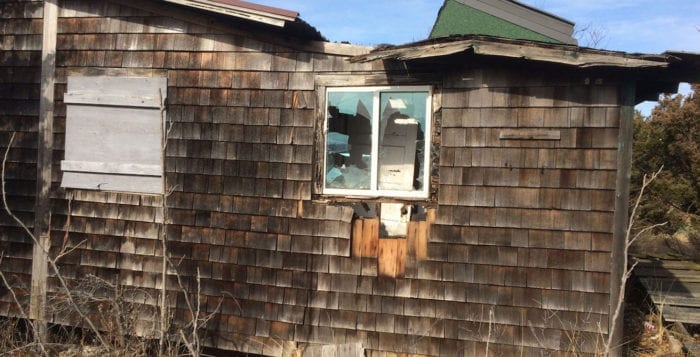Floral arrangements and gifts are no longer blossoming from the Three Village Flower Shoppe.
After 34 years of running the Setauket florist, owner Chin Young Lee retired and closed the shop’s doors for the last time Feb. 28. The decision was a difficult one for the 71-year-old to make, but after suffering a heart attack in November, she decided retirement would be for the best.
Lee, a Rocky Point resident, was a computer programmer for Citicorp commuting to Melville when one day she said one of her children became sick at school. When she was unable to leave work, her husband, Jai, who worked for Brookhaven National Laboratory, took off from his job. Lee said she decided then she wanted a more flexible career.
She talked to her sister, a flower shop owner in California, who told her she could do the same. She began exploring different locations and ideas and eventually chose the already established 220 Main St. location in East Setauket.

“I liked the location, the way the flower shop was set up,” Lee said. “It looked like it was mine.”
Lee began working with the proprietors, the Clark family, on weekends learning the business. She had some familiarity with arrangements, but she said she needed to learn about the more complex ones. After a few months, she bought the business and quit her job with Citicorp.
She was the longest-tenured owner of the florist shop, which had been at the same location for nearly 60 years. She said the Clark family owned it for five years, and before them a Reeves family ran the shop.
Lee grew up in Seoul, South Korea, and after studying Spanish language and literature in Madrid, Spain, she attended The University of Utah and received her master’s degree. During her time in Utah, she met her husband, who lived in Washington, D.C., and was visiting a friend. In 1974 the couple married in Maryland where her husband had a contractual job with
NASA’s Goddard Space Flight Center, and they moved to Long Island in 1978 when he was offered the job at BNL.
After his retirement a few years ago, Lee’s husband worked with her in the shop. Before that, she would typically hire young people from the community to staff the store. While they worked, she would talk to them about what they wanted to do with their lives. Some of her former workers and their parents still come in to let her know how they are doing, and it makes her happy to hear they are doing well.
The florist said she will miss her fellow local business owners including Joanne Van Riper from Setauket Floral Design, who she has known since 2001, when Van Riper bought her flower shop at 1380 Route 25A.
“We could be competition, but she has her own way, and I have my own way,” Lee said.
“I tell her don’t look back. Just look at this wonderful life you’re going to have with your husband.”
Joanne Van Riper
Van Riper and Lee said whenever one of them would hear of a good buy on flowers they would call each other and then buy in bulk so they could pass the savings on to both their customers.
“If I ran out of something and she had it, she would let me use it, and I’d return it the next day,” Lee said. “I think we should all work like that.”
Van Riper is also going to miss Lee personally, and the two would regularly ask each other for advice and share ideas. She remembers going to the florist when she was younger with her father, even before Lee owned it.
“Every time I go over there I want to cry,” Van Riper said. “I’m just very upset but I get it. I tell her don’t look back. Just look at this wonderful life you’re going to have with your husband.”
Kathy Coen, a member of the Setauket Presbyterian Church flower committee, has relied on Lee many times. While members of the committee do their best to use their own flowers to save the church money, sometimes they would call Lee last minute for an arrangement — even calling on a Saturday afternoon for Sunday service flowers. The florist has even shared some tips on flowers and arrangements with the committee members.
“She’s just a very creative person who has a heart of gold, who has been willing to help many times,” Coen said.
Coen said she had Lee create the flower arrangements for her own children’s weddings and knows many friends and
acquaintances who have used her for special occasions, too.
Lee is entering retirement with a lot of wonderful memories of Setauket residents. About a year ago she handled the flower arrangements for a wedding in which the bride was the daughter of a longtime customer, who began shopping at the florist when she was pregnant with her daughter.
“There are a lot of customers I’m attached to and some customers are in tears, and so am I,” Lee said. “For 34 years I’ve been driving here, the same road, and meeting them regularly. So, it’s going to be difficult to adjust.”




























